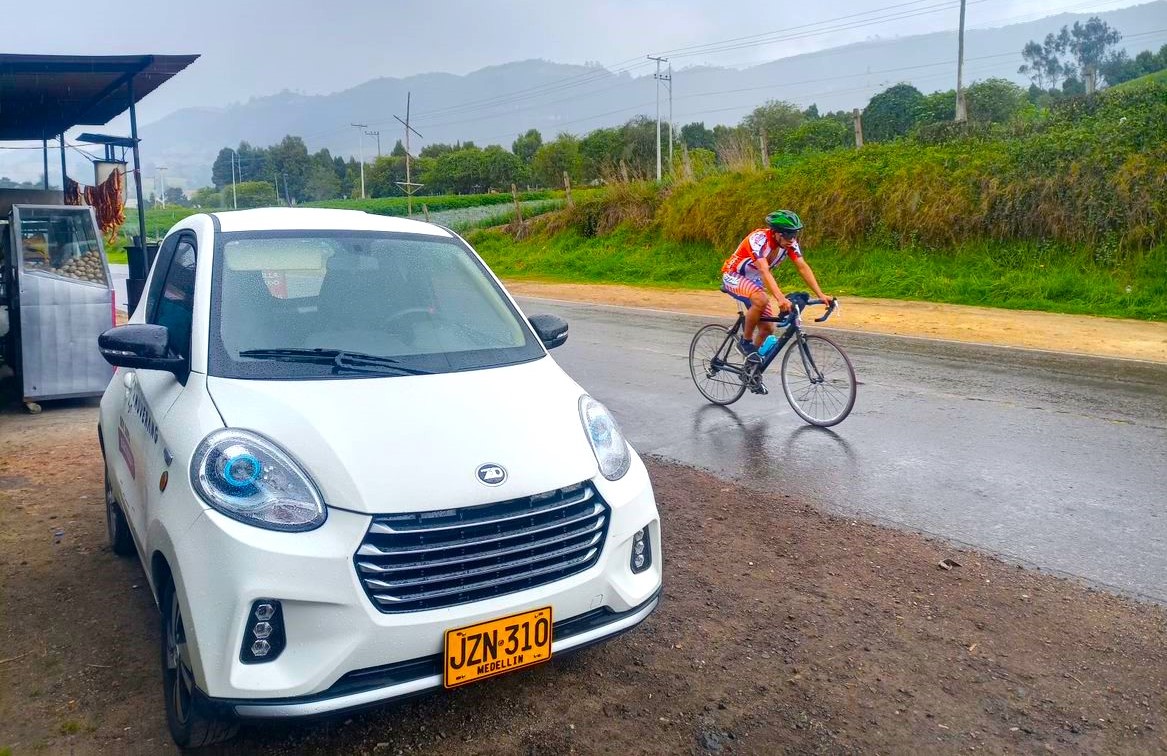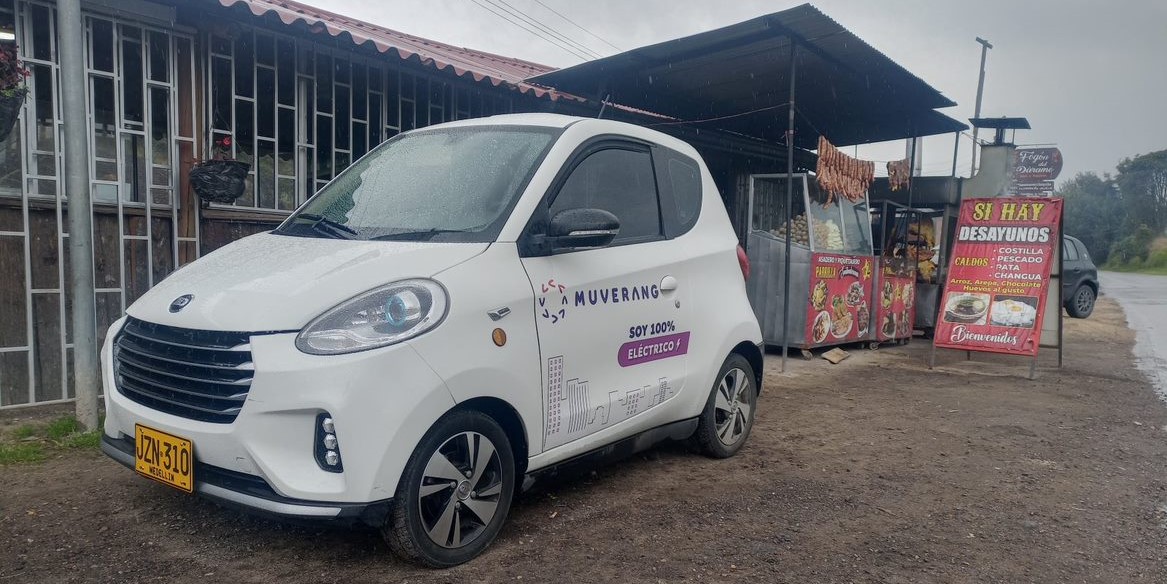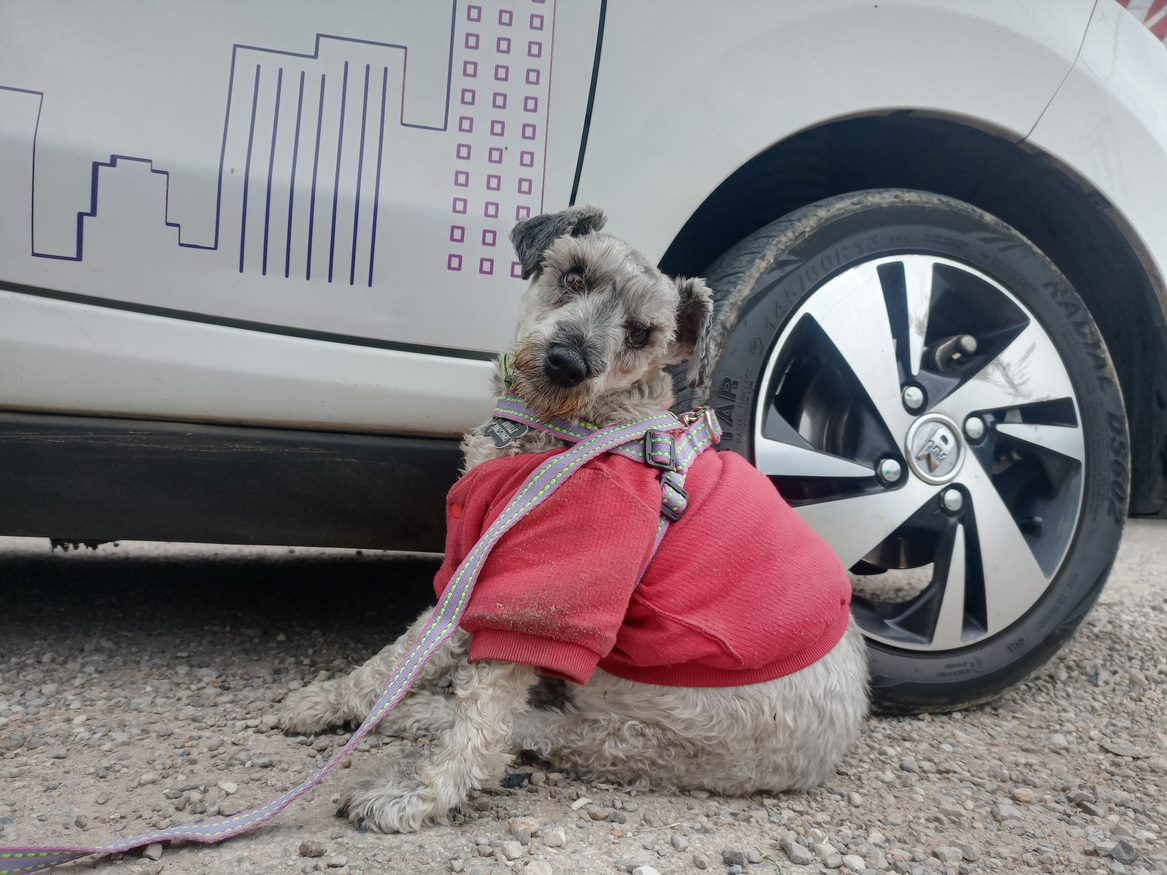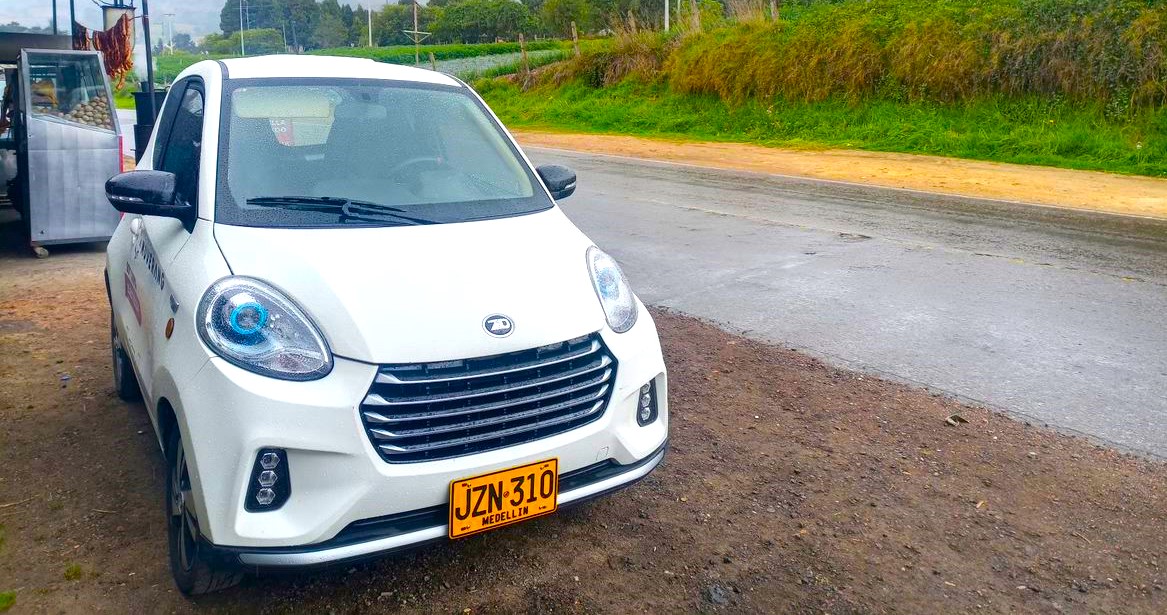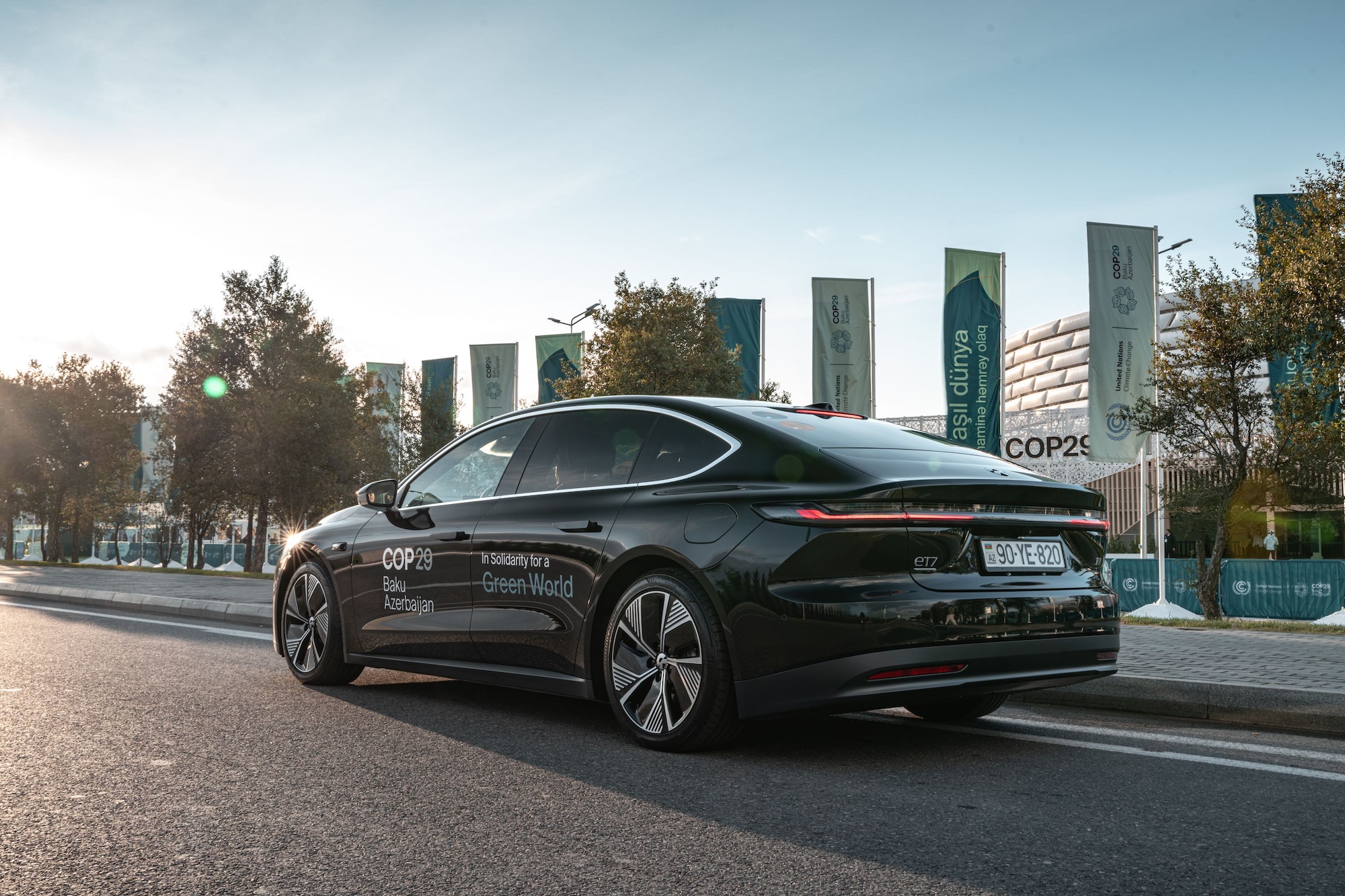Sign up for daily news updates from CleanTechnica on email. Or follow us on Google News!
One of the main changes we’ve seen as the world transitions to electric mobility is the availability of small, affordable electric vehicles. When batteries can be placed in the floor of the car, and the motor is small and light, this type of cars become easier and cheaper to manufacture: the former best-selling Wuling Hongguang Mini EV is the best-known example, but small EVs are rising all over the world and gaining attention and buyers for their urban adaptability and — mainly — the very low prices they’re able to offer.
In developing markets, affordability is the name of the game. Colombia isn’t the exception, and its most sold EV is a two-seater called the Zhidou D2S, one that I recently had the chance to try and even take for a small trip outside the city.
Zhidou D2S: General Overview
The Zhidou D2S is a Chinese-made mini EV with two seats and a surprisingly large 300-liter trunk. It features:
- 18 kWh lithium-ion (NMC) batteries.
- 15 kW nominal motor, 30 kW peak.
- 85 km/h top speed.
- 150 km nominal range, though no official standard is presented.
- 629 kg weight, making it impressively light for an EV (or any vehicle, really).
As of November 2023, this vehicle can be purchased at COP$61’990.000, or $15,523 (down nearly 10% from early 2023). That places it in the ballpark of Colombia’s cheapest ICE, the Kia Picanto, which costs COP$51’990.000, or $13,018. However, the Picanto is clearly a more capable vehicle, with 4 seats and no range limitations, showing that EVs still have a way to go in the road to price parity.
The Zhidou D2S is also available for daily and monthly renting through a local company called Muverang … and, thanks to a nice discount they offered, my partner and I decided to rent it for a weekend and take it out for a trip in Bogota’s surroundings.
Traveling in a Mini EV, Day 1: Neusa Dam.
Bogota is located high up the mountains in Colombia’s Eastern Cordillera, where rain is plentiful and geography allows for dams and reservoirs; as a result, the landscape is filled with artificial lakes that make for a nice day trip out of the city. Our first destination was Neusa (one of these lakes). The trip was planned with a Terpel Voltex charger conveniently placed along the way so that we could visit small towns further north.
After picking up the car in northern Bogota at 92% SOC, the three of us (me, my partner, and our dog, blissfully sleeping in the trunk) took off. Heavy traffic slowed us down, but the car felt comfortable, surprisingly roomy, and very easy and even fun to drive in the jam. At this point, we were enthralled and actually wondering if it would be worth it to buy one of these. A couple of hours and a stiff climb later (one that the car had no issue whatsoever with), we were in Neusa, 61 km into our trip.
We walked for a while, got to know the local offers, and started our climb down. It was nearly midday, and the plan was to charge the car as we had lunch.
Terpel Voltex’s station had three connectors: CHAdeMO, CCS1, and Type 2 (one of each). The Type 2 plug was available (there was a Chevy Bolt EUV using CCS1), and, since we had already downloaded the app, the process to charge was relatively straightforward, though it was tricky to get the system to recognize we had already connected the vehicle.
This is where problems started.
I was of the understanding that the Zhidou D2S, though lacking fast-charging capabilities, was able to “slow charge” at 7 kW as most EVs do … but as our lunch progressed, it became clear that the charging speed was less than half of that. This put a strain in our plans, as our two 1-hour planned charging stops had suddenly become 2-hour long stops … far too much for a one-day trip. After nearly an hour of lunch, only 2.83 kWh had been added to the battery (16%), so we had to choose between waiting another hour or cutting our trip short and turning back.
In the end, we decided against visiting the towns further north and started our return to Bogota. We stopped again in Chia, a small town north of Bogota, to recharge in another Terpel Voltex station with four Type 2 chargers, where we charged for a little more than an hour while eating something and walking around with our dog (adding 4.42 kWh, or 25%, to the battery). Thanks to this stop, we managed to get back to our home with some 27% SOC.
Day 2: Sibate
The rental Zhidou D2S came with a 110V connector and a 12-meter-long extension cord, so it was quite easy to get it to charge overnight in our building. The morning after, at 100% SOC, we started our trip in the other direction to get to Sibaté, a small town south of Bogota known for the old mental hospital formerly operating there.
Already aware of the Zhidou D2S’s charging limitations, we decided against a longer trip with a stop at another charging station south of Bogota, and instead planned it so we could go there and come back in one charge. The trip was uneventful: once again, the Zhidou D2s proved to be quite versatile and fun to drive, and responded well to the stiff climbs it had to face at some points.
Final Thoughts
All in all, we drove some 250 km in the Zhidou D2S during the two days that we had it, requiring approximately 27 kWh for the entire ride and averaging a little bit less than 11 kWh per 100 km (or 9.2 km/kWh). The car responded well to the requirements of our trip, showing that EVs have no issues whatsoever accelerating rapidly or climbing steep climbs. Tts small size was a blessing when taking sharp turns or having to find a parking spot. The speed was relatively low (due to traffic) and at most we traveled at 80 km/h — though, 60 km/h was far more common.
However, charging speeds were a real disappointment, and serve to show how even in “slow” charging, there’s a significant difference between 3 kW and 7 kW, one that in this case became a dealbreaker in the decision to purchase the car. As both my partner and I hate traffic and despise driving in Bogota — preferring public transportation, a bicycle, or our electric Super Soco — the Zhidou would serve as a weekend and leisure vehicle, something that becomes problematic if we can’t manage to go anywhere farther than 80 km from the city before having to stop several hours to charge. All in all, the Zhidou D2S is a great city car and can even be taken on short trips, but these require significant planning and a lot of time in-between driving to recharge … and, if you ask me, at its current cost, it just isn’t worth it.
Hopefully, EVs will become cheaper soon enough. And remember, if you come to Bogota and wish to move around in an EV, Muverang may be the company you’re looking for.
Have a tip for CleanTechnica? Want to advertise? Want to suggest a guest for our CleanTech Talk podcast? Contact us here.
EV Obsession Daily!
I don’t like paywalls. You don’t like paywalls. Who likes paywalls? Here at CleanTechnica, we implemented a limited paywall for a while, but it always felt wrong — and it was always tough to decide what we should put behind there. In theory, your most exclusive and best content goes behind a paywall. But then fewer people read it!! So, we’ve decided to completely nix paywalls here at CleanTechnica. But…
Thank you!
Community Solar Benefits & Growth
CleanTechnica uses affiliate links. See our policy here.

